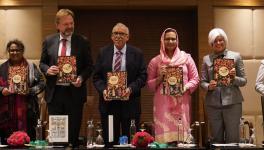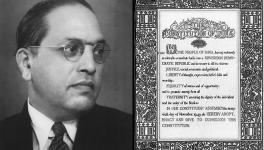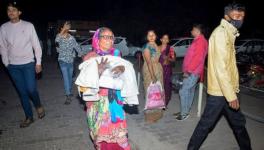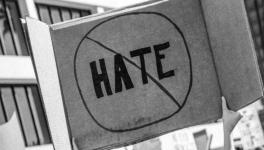Uttar Pradesh Leads in State-Led Destruction of Rule of Law
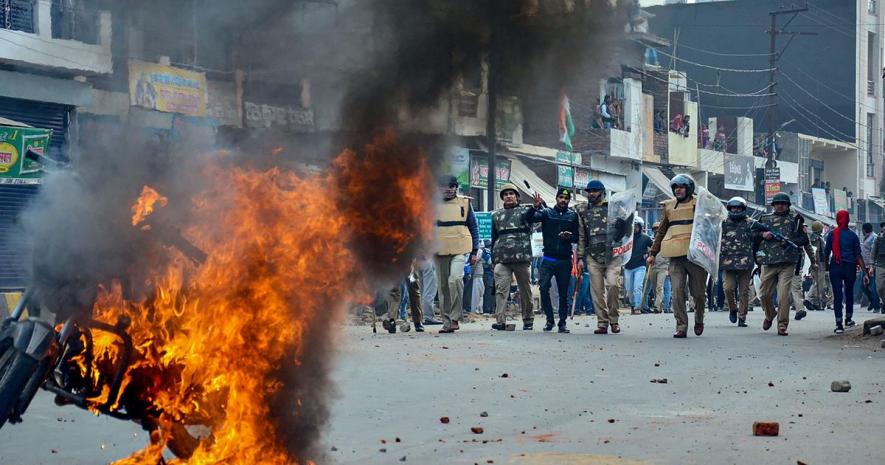
Last Thursday, the Uttar Pradesh police arrested a man in connection with the shooting of Mohammad Tariq, who had joined a rally protesting against the Citizenship (Amendment) Act (CAA), 2019 on in Aligarh 23 February. They picked up the man, one Vinay Varshneya, on charges of attempt to murder when Tariq’s condition started worsening. With his death on Friday night, Varshneya will now likely face charges of murder.
The arrest, made 18 days after the shooting, was said to be in response to large crowds gathered near the hospital where Tariq was admitted, which fuelled apprehensions among the police of further trouble. At this point, the plot thickens. Varshneya claims he is the general secretary of the Aligarh city unit of the Bharatiya Janata Yuva Morcha. After his arrest, Bharatiya Janata Party (BJP) MLAs Anil Parashar and Sanjeev Raja went to the Etah jail to meet Varshneya, but, since then, BJP leaders have suggested that Varshneya is no longer with the BJYM. An all too familiar tactic.
On 19-20 December 2019, 23 protestors were killed during anti-CAA protests. Many more were injured; for instance, Mohammad Ibrahim, who was shot in Aligarh on 23 February and blinded in one eye. The state police says that only one of those killed died by police firing—Mohammad Suleman in Bijnore—who was apparently shot by a constable in self-defence. The prevalent police theory, still, is that the deaths were caused by shots fired by “anti-social” elements which had “infiltrated” the protests.
This is a curious argument. The Uttar Pradesh administration and the police have been pretty pro-active in identifying people who destroyed property during the riots, putting up billboards “naming and shaming” them and threatening to sell off their properties to make up for losses resulting from alleged damage to property, even before any charges have been proved in court. Faced with a court direction to remove these billboards, it has now passed an ordinance allowing it. While such efficiency on the part of otherwise slothful forces might be congratulated, it is quite unaccountable why and how the police have failed to apprehend the ‘anti-socials’ whose bullets have taken so many lives.
Some further investigation is necessary. A former and very senior diplomat, Deb Mukharji, participated in a public tribunal relating to the Uttar Pradesh situation on 16 January as a ‘juror’, alongside former Supreme Court judges, a retired chief justice of the Delhi High Court, academics and former bureaucrats. In an article published in The Telegraph, Calcutta, on 20 January, he wrote of the horrifying testimonies the jurors had heard: Chief Minister Adityanath asking for revenge against the protestors; the targeted persecution of Muslims by the state machinery; the arrest of and filing of charges against innocents; firing at and killing of people without following the law; custodial violence and communalised verbal abuse; and blocking of access to medical treatment for the injured.
Mukharji cites the jury’s conclusion: “The state of affairs in Uttar Pradesh shows a complete collapse of rule of law. In fact, the very state administration that is charged with protecting the rule of law is perpetrating violence against its own people.”
The Uttar Pradesh administration not only strenuously denied that its gunshots had killed citizens protesting peacefully, at least until attacked, it floated the theory that, contrariwise, many policemen had been killed by bullets fired by the protestors. We’ll come to that after a bit of barebones chronicling of what happened in Uttar Pradesh since the middle of last December.
Around that time, the police unleashed its first wave of violence against students of the Aligarh Muslim University, who had been protesting against the CAA on campus. Rapid Action Force was deployed. And tear-gas shells, stun grenades were lobbed over or through the gates. Rubber bullets were fired. The police claimed the students pelted stones.
On 19 December, one man died in police firing in Lucknow. Violence had broken out after the police attacked a peaceful procession. Three people were also grievously wounded. The police denied having fired and claimed six officers had been injured. Some people were detained.
There seems to be little doubt that the violence that broke out in Lucknow and elsewhere in Uttar Pradesh was instigated by police action. The very next day, 20 December, six people died when police attacked anti-CAA protestors across the state. It was a rerun of the day before, with the police attacking by and large peaceful demonstrators. At the very least, disproportionate force was used.
On 21 December, a child of eight was trampled to death by a stampeding crowd fleeing a police baton charge. On 22 December 2019, it was reported that eight of 16 people who had died over the past few days had succumbed to bullet injuries. The Uttar Pradesh police continued, however, to exculpate themselves, pushing the theory that the deaths of 15 people were “in the cross-fire between groups of protestors”.
Former DGP Vikram Singh has debunked this theory, pointing out that the bullets extracted from bodies could only have been fired by police personnel (see The Telegraph, 23 December 2019). He also gave credence to the argument that excessive force was used when he pointed out that during a baton charge, policemen are supposed to strike targets below the knee. Many protestors suffered severe head injuries at the hands of the police. In late December, a fact-finding team that had gone to Uttar Pradesh found much the same things Mukharji had written about.
Let me skip a few chapters, so to speak. On 18 January, it was reported that a senior police officer had claimed that Mohit Kumar, the policeman who had shot Suleman in self-defence, the only—and belatedly—acknowledged death in police firing, had been admitted to hospital with a bullet in his stomach. When reporters went to the hospital, doctors told them that he had received pellet injuries to his hip and been transferred to another hospital. It transpired at the Meerut hospital where he had been moved that he had been discharged. It turned out that no police officer had suffered any serious injury.
In under a month, all police officers injured after the mid-December crackdown had been discharged. One court had pulled up the state counsel in two bail hearings for overstating injuries to police personnel.
It has been necessary to present this barebones backstory to highlight two points: first, that the Uttar Pradesh police and administration inspired by Adityanath acted illegally and repressively to subjugate legitimate, and, for the most part, peaceful protest; and, second, that they tried to cover up their actions by the means of falsehoods and red herrings—the claims respectively that no one had died in police firing and that deaths had been caused by protestors shooting each other; and that many police had been seriously injured in the firing.
These and the other points flagged by Mukharji, added to the probability of collusion between the police/administration and Hindutva, pro-CAA right-wingers, lead to an ineluctable conclusion: that a proper investigation should be conducted into what happened in Uttar Pradesh around mid-December and thereafter. It should ideally be conducted by the Central Bureau of Investigation (CBI), despite its current state of emasculation, under the supervision of the Allahabad High Court or the Supreme Court. Clearly. The police and administration cannot investigate themselves or each other, especially in the extant circumstances.
If that happens, there is no reason why the CBI cannot conduct a court-monitored investigation into the Delhi riots as well. As of now, two special investigative teams (SITs) are probing the riots. Given the rafts of allegations against the Delhi police force, the same argument holds: it cannot investigate itself. Moreover, questions have been asked about both the deputy commissioners of police (DCPs) tasked to lead the SITs investigating the riots.
DCP Rajesh Deo linked the Shaheen Bagh shooter with the Aam Aadmi Party, without evidence, and spoke out of turn, for which the Election Commission has issued a stricture against him, while DCP Joy Tirkey’s handling of the attack on Jawaharlal Nehru University has also been, to put it mildly, extremely charitable to the ruling BJP’s associate, the Akhil Bharatiya Vidyarthi Parishad, which played by far the most important role in the attack, as the Sangh parivar’s storm troopers.
With India’s constitutional democracy under ceaseless attack, it certainly appears as if it will soon be emptied of content; hollowed out with each passing day. Institutionally, the way ahead for its survival is by action from a much stronger judiciary, allied with the resistance to the Centre’s designs by the country’s federating units. Beyond institutions, however, citizens have shown a glimpse of what is possible by way of resistance. The real substance of optimism lies there.
The author is a researcher and freelance journalist. The views are personal.
Get the latest reports & analysis with people's perspective on Protests, movements & deep analytical videos, discussions of the current affairs in your Telegram app. Subscribe to NewsClick's Telegram channel & get Real-Time updates on stories, as they get published on our website.










